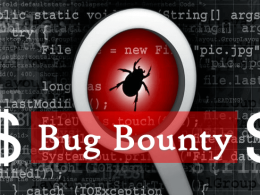-
Hacking humans who have installed components such as pacemakers.
-
Cybercriminals tinkering with your home thermostat.
-
Threat actors using remote access to lock you inside your smart car.
Depending on how far you look into the future, the evolution of technology offers cybercriminals some pretty interesting and lucrative opportunities, resulting in more sophisticated cyberattacks.
Below we explore some of the predictions for the future of cybersecurity for the near future, based on how technology and the industry have been developing in recent years.
Since traditional SIEM platforms are notorious for exhausting cyber teams with unnecessary notifications, and are largely considered not enough to prevent sophisticated attacks, we also explore how investing in a SIEM alternative can help you prepare for such events.
Increased Number of Cyber Attacks
With more technology being adopted (such as cloud-based environments), there is also more information that has to be managed by companies (sensitive data being the most concerning).
In the future, there will be even more small components used, such as the Internet of Things (IoT) that are already a key component of most house appliances. As of now, they’re also poorly protected against possible hacking.
Customers and social media users already give more information than ever before to companies. If not guarded, that information can be exploited by hackers.
Therefore, there is an abundance of data and new technology that has to be guarded as well as plenty of data that could be compromised.
How to keep up?
Most companies have versatile security solutions to protect their architecture, but they struggle with management — continual strengthening of the security and reacting to threats early.
A specific SIEM alternative, Open XDR, an extended detection and response platform, can manage high data volumes. It also combines the capabilities of versatile tools for threat detection and response.
Persistence of Human Errors
Social engineering, mistakes in the configuration of cloud components, and unpatched vulnerabilities are some of the main weaknesses that have led to exploits such as phishing campaigns.
Cybercriminals shot their first phishing email in 1995. Decades later, with more robust security than ever before, we still witness successful scams of this type.
At the moment, phishing attacks are responsible for almost 95% of the overall data breaches that cause major financial losses to businesses.
Since it relies on the manipulation of humans and exploiting their biases, this type of cybercrime has been accessible even to those that are unfamiliar with sophisticated hacking techniques.
That’s also why it’s difficult to eradicate phishing in its entirety, and we can expect this to remain an issue for years to come.
Many phishing attempts are filtered by the email provider if malicious attachments or links are detected in the body of an email. Therefore, they already don’t reach the recipient.
However, more sophisticated types can fool even professionals who are familiar with phishing scams in depth.
What are businesses doing about it?
For starters, most have complex email filters that can detect suspicious messages trying to reach the inbox.
As for more sophisticated (personalized) phishing emails that can bypass security, awareness training has been key.
Companies have started to heavily invest in cybersecurity training for their employees. In 2021, more than half of employees reported that they offer some form of cybersecurity training for their teams.
To identify misconfigured cloud components and patch up vulnerabilities on time, they also have multiple levels of security tools and protocols that are dedicated to finding issues in the system and notifying the IT teams of high-risk threats.
Open XDR, a SIEM alternative, has been an essential AI and machine learning based tool for finding threats and weaknesses in real-time.
Oversaturation of the Cybersecurity Job Market
Amid the cybersecurity crisis, it’s important to have a great team of security analysts. The problem is that the last couple of years have been marked by a shortage of cybersecurity professionals.
Experts are leaving the field due to stress, lack of life and work-life balance, poor corporate culture, no proper compensation, or even lack of opportunities to develop as professionals.
Jobs that are being offered in the market are left unfilled. In 2022, it took companies three to six months on average to employ qualified candidates for the cybersecurity position within their organization.
Many have left or changed companies for better-paying jobs. However, lucrative opportunities have also drawn many future cyber experts to develop their careers in the field.
Professionals today have many opportunities to develop in the field at their disposal — more formal education (e.g. colleges offering courses and majors dedicated to cybersecurity) and certifications that enable additional qualifications.
Will there be too many cybersecurity professionals in the future?
Well, here we’re talking about a field that is wide and covers many versatile job positions. The cybersecurity industry is still new, and it counts many different positions, some of them include:
- Penetration tester
- Cloud security specialist
- Artificial Intelligence security specialist
- Malware Analyst
- Application security engineer
With that being said, the industry is rapidly shifting and changing. This list is going to become even more extensive, but more popular specializations (such as red teamer) could become oversaturated.
To conclude, we are currently in the golden era of cybersecurity. At the moment, professionals can find high-paying jobs and have more choices due to the high demand and shortage of experts.
However, as more people enter the market and specialize in versatile parts of the field, the job market might shift significantly, and there’s no guarantee that the cybersecurity job market will remain as lucrative.
While there will always be the need for cybersecurity professionals to automate tools and react to threats based on the SIEM alternative tools such as Open XDR, it’s good to keep this in mind.
Get Ready For Threats of the Future With a SIEM Alternative
The future of cybersecurity will be dynamic and exciting for the professionals who remain in the field.
New technologies with yet-unknown vulnerabilities, novel exploits, and different jobs in security that we don’t anticipate are yet to come.
Regardless, some things will never change — such as hackers exploiting humans working for companies and finding new ways to compromise systems.
To prepare for both old and upcoming threats, businesses can start by using a SIEM alternative, such as Open XDR, as well as introducing cybersecurity training for employees.











